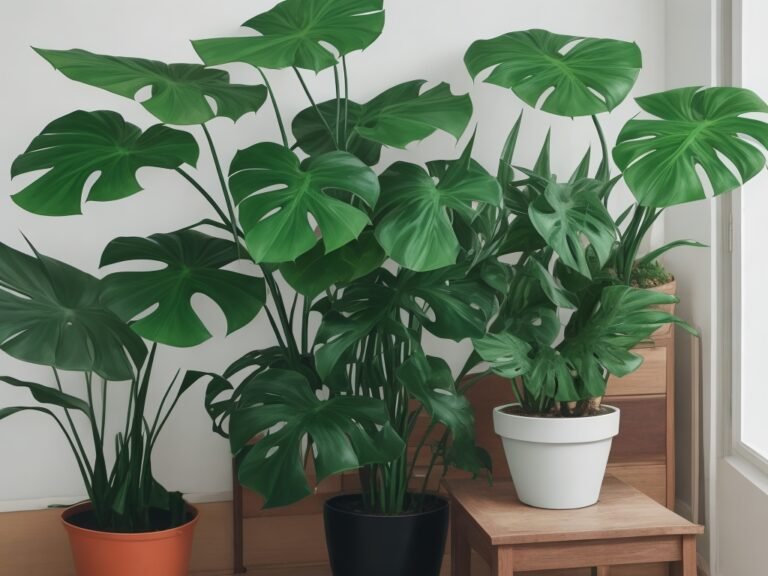What Causes Holes In Monstera Leaves?
Key Takeaways:
- Overwatering and improper drainage can cause holes in Monstera leaves.
- Insect infestations, such as mealybugs and spider mites, can lead to holes in Monstera leaves.
- Physical damage, such as tearing or puncturing, can result in holes in Monstera leaves.
- Nutrient deficiencies, especially in calcium and magnesium, may contribute to the development of holes in Monstera leaves.
Do you have a Monstera plant with mysterious holes in its leaves? Don’t worry, you’re not alone.
This common issue can leave plant lovers feeling perplexed and frustrated.
In this article, I’ll be diving deep into the various causes of holes in Monstera leaves, helping you understand why this happens and how to prevent it. From natural leaf fenestration to pesky insects, nutrient deficiencies, overwatering, and physical damage, I’ll cover it all.
So, grab your gardening gloves and let’s uncover the secrets behind those intriguing leaf holes!
| Possible Causes | Description |
| Overwatering | Excessive moisture can lead to root rot, causing the leaves to develop holes. |
| Underwatering | Lack of water can stress the plant, weakening the leaves and making them more susceptible to damage. |
| Inadequate Light | If a Monstera plant is not receiving enough light, it can become weak and vulnerable to pests, leading to holes in the leaves. |
| Pests | Insects such as spider mites or thrips can feed on Monstera leaves, creating small holes or causing them to turn yellow. |
| Disease | Fungal or bacterial infections can result in the formation of holes on Monstera leaves. |
Common causes of holes in Monstera leaves
Common causes of holes in Monstera leaves include natural leaf fenestration, insects and pests, nutrient deficiencies, overwatering or root problems, and physical damage.
Natural leaf fenestration
Natural leaf fenestration refers to the presence of naturally occurring holes or splits in the leaves of Monstera plants. This unique characteristic is believed to have evolved as a way for the plant to adapt to its environment.
Factors such as light exposure and age of the plant can contribute to the development of fenestration.
Fenestrated leaves allow the plant to maximize its exposure to light, optimizing photosynthesis. They also reduce wind resistance, allowing the plant to withstand strong gusts of wind.
This feature has become highly sought after by plant enthusiasts, making Monstera plants with fenestrated leaves highly desirable.
Insects and pests
Insects and pests can be a common cause of holes in Monstera leaves. Some common pests include spider mites, mealybugs, and aphids.
These pests feed on the plant’s foliage, resulting in holes or damage to the leaves.
It is important to identify and control these pests using insecticidal soaps, neem oil, or natural predators like ladybugs. Regularly inspecting your plants and practicing good hygiene can help prevent infestations.
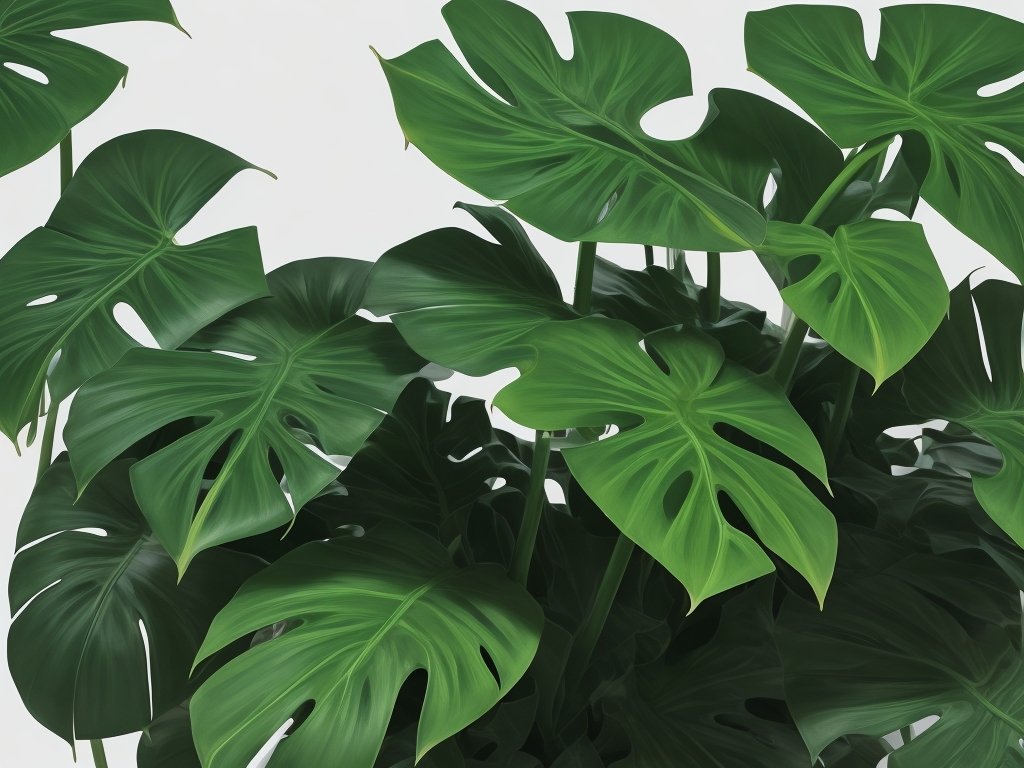
Nutrient deficiencies
Nutrient deficiencies can occur in Monstera plants when they lack key nutrients. This can result in holes and discoloration in the leaves.
Common deficiencies include nitrogen, phosphorus, potassium, and magnesium.
Symptoms vary but may include yellowing leaves, stunted growth, and weak stems. Fertilizing with a balanced fertilizer can help correct these deficiencies.
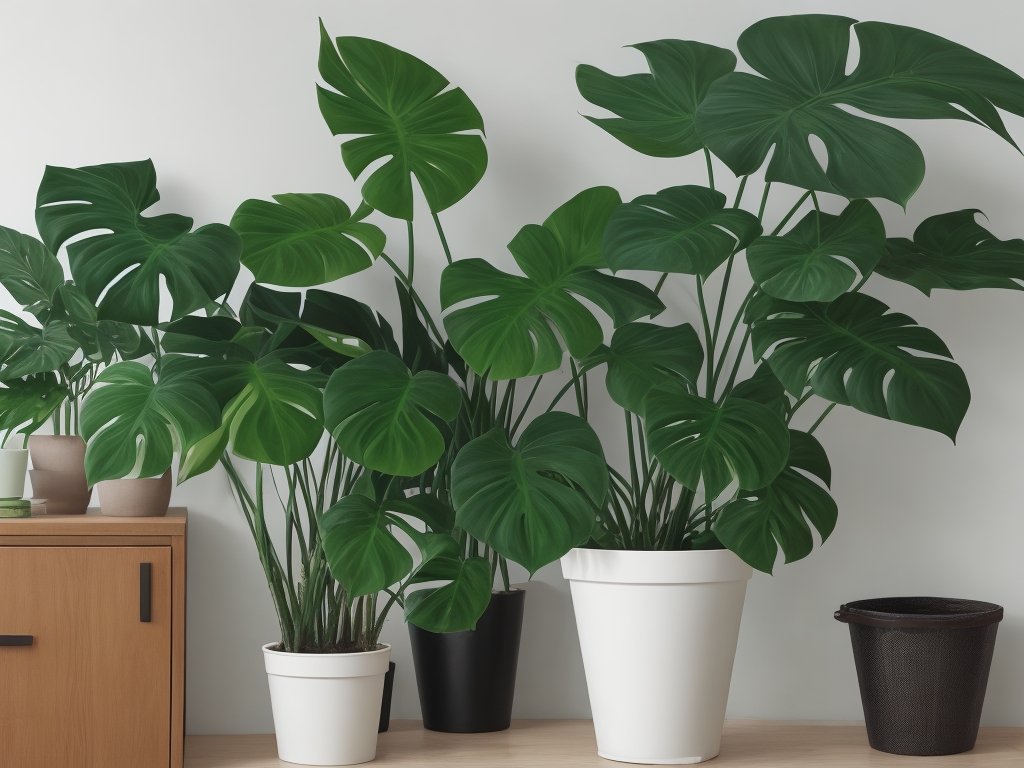
Overwatering or root problems
Overwatering and root problems can lead to holes in Monstera leaves.
Overwatering can cause root rot, which affects the health of the leaves.
Signs of overwatering include yellowing leaves, wilting, and a strong odor from the soil.
To avoid overwatering, allow the top inch of soil to dry out before watering again.
Additionally, ensure that the Monstera has well-draining soil and a pot with drainage holes.
Taking care of the roots and providing proper watering techniques are crucial in preventing leaf damage.
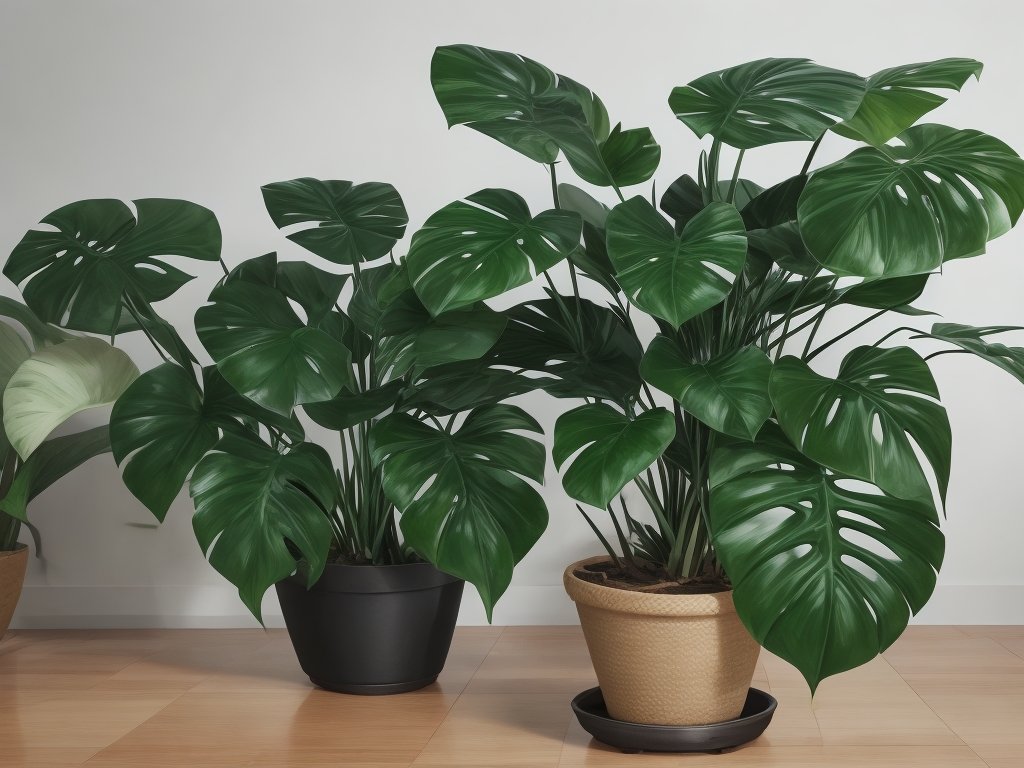
Physical damage
Physical damage to Monstera leaves can occur due to various reasons. Some common causes include accidental bumps or knocks, strong winds, or improper handling during transport.
Sharp objects, such as scissors or pets with sharp claws, can also cause physical damage.
To prevent such damage, it’s important to handle your Monstera plant with care, keep it away from high traffic areas, and ensure that any sharp objects or potential hazards are kept out of reach. Regularly inspecting your plant for any signs of physical damage and promptly addressing them can help maintain the health and appearance of your Monstera leaves.
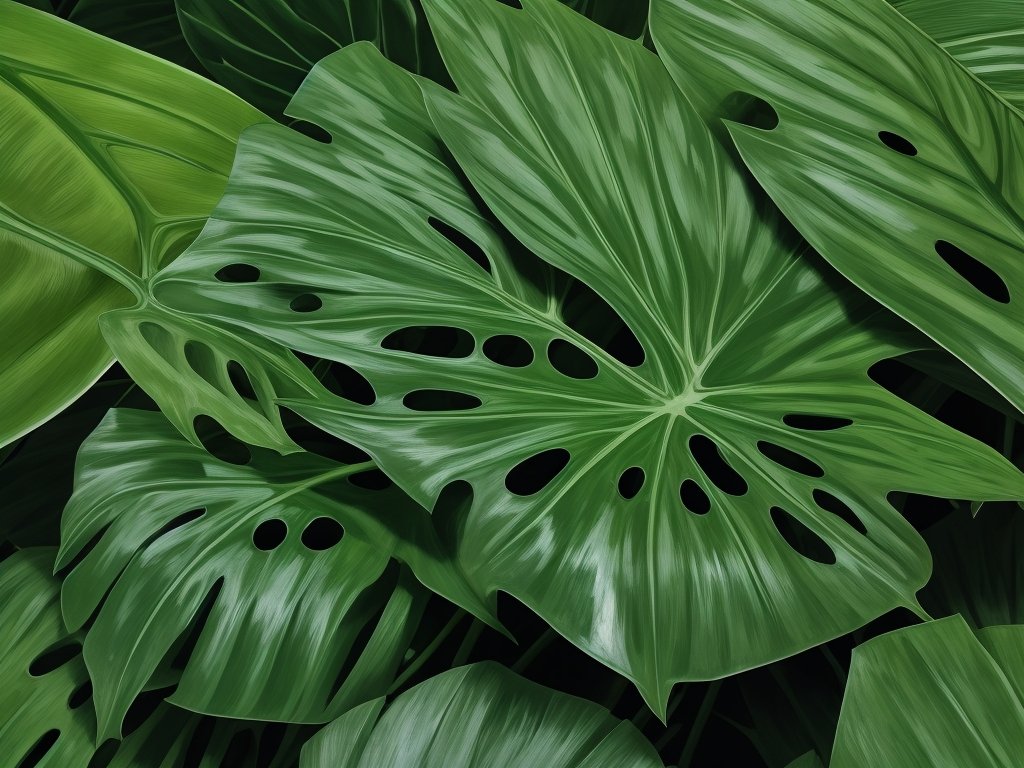
Natural leaf fenestration in Monstera plants
Monstera plants naturally develop holes in their leaves, a phenomenon known as fenestration. These fenestrations have several benefits for the plant, such as improved air circulation and reduced wind resistance.
Explanation of fenestration
Fenestration refers to the natural occurrence of holes or splits in the leaves of Monstera plants.
It is a characteristic feature of this species and is not caused by pests, diseases, or damage.
Fenestration helps the plant in various ways, such as allowing better airflow, increasing light penetration, and reducing drag on the leaves.
It is a unique adaptation that adds to the beauty and functionality of Monstera plants.
Factors that contribute to fenestration in Monstera leaves
Factors that contribute to fenestration in Monstera leaves include genetic predisposition, light exposure, proper humidity, and age of the plant. Monstera plants have natural leaf fenestration, but these factors can enhance and promote the development of these holes in the leaves.
Benefits of fenestration in Monstera plants
Fenestration, or the natural leaf holes, in Monstera plants has several benefits.
It increases airflow and light penetration, reducing the risk of diseases.
It also allows the plant to tolerate strong winds better and prevents the leaves from tearing during storms.
Plus, fenestration adds an aesthetic appeal that many plant enthusiasts find attractive.
Insects and pests that cause holes in Monstera leaves
Insects and pests can cause holes in Monstera leaves.
Identification of common pests
Common pests that can cause holes in Monstera leaves include:
- Spider mites: These tiny creatures are difficult to see with the naked eye but can cause webbing and yellowing leaves.
- Mealybugs: Mealybugs appear as small white cotton-like masses on the plant, causing stunted growth and distorted leaves.
- Aphids: These small insects feed on plant sap, causing distorted leaves and a sticky residue called honeydew.
- Scale insects: Scale insects resemble small bumps on the leaves and can cause yellowing and leaf drop.
- Fungus gnats: These tiny black flies lay eggs in the soil, and their larvae feed on the roots, leading to yellowing and wilting leaves.
Inspect your Monstera plant regularly for these pests, and take appropriate measures for control and prevention.
Damage caused by pests
Pests like spider mites, mealybugs, and thrips can cause holes in Monstera leaves. They feed on the plant’s sap, leaving behind damaged areas.
This can lead to a decrease in the plant’s overall health, stunted growth, and even death if left untreated.
Regular inspection and immediate pest control measures are important in preventing further damage.
Pest control and prevention methods
To control and prevent pests in your Monstera plants, here are some effective methods you can try:
- Regularly inspect your plants for any signs of pest infestation, such as webs, eggs, or visible insects.
- Remove any affected leaves or pests manually, using your hands or a soft cloth to gently wipe them off.
- Use organic insecticidal soaps or neem oil sprays to kill and repel pests. Follow the instructions on the product label.
- Keep your plants clean by regularly wiping the leaves with a damp cloth to remove dust and debris that could attract pests.
- Avoid overwatering your Monstera plants, as this can create a damp environment that pests thrive in. Allow the soil to dry out between watering sessions.
- Place sticky traps near your plants to catch flying insects like fungus gnats and fruit flies.
- Quarantine any newly purchased plants for a few weeks to prevent introducing pests to your existing collection.
- Encourage natural predators like ladybugs or lacewings to control pest populations by creating a welcoming environment for them in your garden.
Monstera plants healthyest control and prevention methods, you can keep your Monstera plants healthy and free from holes caused by pests.
Nutrient deficiencies and their impact on Monstera leaves
Nutrient deficiencies can lead to noticeable changes in Monstera leaves.
Overview of essential nutrients for Monstera plants
Monstera plants require several essential nutrients to thrive.
Some of the key nutrients they need include nitrogen, phosphorus, potassium, calcium, magnesium, and iron.
These nutrients play important roles in the plant’s growth, development, and overall health.
Without an adequate supply of these nutrients, Monstera plants may experience stunted growth, yellowing leaves, and decreased vitality.
It’s important to provide them with a balanced fertilizer to ensure they receive the necessary nutrients for optimal growth.
Symptoms of nutrient deficiencies in Monstera leaves
Symptoms of nutrient deficiencies in Monstera leaves can include yellowing or browning of the leaves, stunted growth, and leaf curling or wilting. Specific nutrient deficiencies may result in different symptoms, such as yellowing between the leaf veins for an iron deficiency or purple stems for a phosphorus deficiency.
Providing the right nutrients through proper fertilization can help correct these deficiencies and promote healthy leaf growth.
Correcting nutrient deficiencies through fertilization
To correct nutrient deficiencies in your Monstera plant through fertilization, you’ll need to provide the missing nutrients in a balanced and appropriate manner.
A good approach is to use a well-rounded fertilizer formulated specifically for houseplants.
Look for one that contains key nutrients like nitrogen, phosphorus, and potassium.
Follow the instructions on the fertilizer package to determine the appropriate dosage and frequency of application.
Remember, it’s important to maintain a consistent fertilization schedule to ensure your Monstera receives the nutrients it needs to thrive.
Overwatering and root problems in Monstera plants
Overwatering can cause issues in Monstera plants, particularly with their roots.
Root problems can lead to unhealthy leaves in Monstera plants.
Effects of overwatering on Monstera leaves
Overwatering can have negative effects on Monstera leaves. It can lead to yellowing, wilting, and drooping leaves.
The roots may become waterlogged, causing root rot.
This can weaken the plant and make it more susceptible to diseases and pests. Over time, the leaves may develop black or brown spots and eventually fall off.
To prevent overwatering, make sure to water your Monstera plant only when the top inch of soil is dry and use well-draining potting mix.
Root rot and its impact on leaf health
Root rot occurs when the roots of a plant are constantly wet, leading to decay and fungal growth.
This can have a negative impact on the health of Monstera leaves.
As the roots are unable to absorb water and nutrients properly, the leaves may become yellow, wilted, and develop brown spots.
In severe cases, the leaves may even fall off.
Proper watering techniques and ensuring good root health are important to prevent root rot and maintain healthy leaves.
Proper watering techniques and root care
Proper watering techniques and root care are essential for the health of your Monstera plant.
Water your plant thoroughly, allowing excess water to drain.
Wait for the top inch of soil to dry before watering again.
Avoid overwatering, as it can lead to root rot.
Provide good drainage and use well-draining soil.
Monitor the moisture level and adjust watering accordingly.
Regularly inspect the roots for signs of rot or damage.
Repot your plant every 1-2 years to ensure healthy root growth.
Physical damage to Monstera leaves
Physical damage can cause holes in Monstera leaves.
Causes of physical damage
Physical damage to Monstera leaves can occur due to various reasons.
Some common causes include accidental bumping or brushing against the leaves, rough handling during transport or relocation, pruning or trimming gone wrong, and pets or small children causing damage by chewing or scratching the leaves.
Additionally, extreme weather conditions like strong winds, hail, or severe temperature fluctuations can also lead to physical damage.
It’s important to be cautious and gentle when handling your Monstera plant to avoid such damage.
Preventive measures for protecting Monstera leaves
To protect Monstera leaves, there are a few preventive measures you can take:
- Avoid excessive direct sunlight: Monstera plants prefer bright, indirect light. Too much direct sunlight can scorch their leaves, causing damage.
- Keep a consistent watering schedule: Overwatering can lead to root rot and damaged leaves. Water your Monstera when the top inch of soil feels dry, and ensure proper drainage.
- Maintain humidity: Monstera plants thrive in humid environments. Use a humidifier or place a tray of water near the plant to increase moisture levels.
- Inspect for pests regularly: Check your Monstera for common pests like spider mites, mealybugs, and scale insects. If you spot any, promptly treat them using organic pest control methods.
- Provide proper nutrition: Feed your Monstera with a balanced fertilizer during the growing season. This will help prevent nutrient deficiencies and promote healthy leaf growth.
- Handle with care: When moving or cleaning your Monstera, be gentle to avoid physical damage to the leaves. Avoid pulling or tearing the leaves, as they are delicate.
Frequently Asked Questions
What are the benefits of fenestration in Monstera leaves?
The benefits of fenestration in Monstera leaves are increased light absorption, improved air circulation, and enhanced photosynthesis. The holes in the leaves allow sunlight to reach lower parts of the plant, promoting healthy growth.
Fenestration also helps prevent fungal diseases and reduces the risk of leaf damage caused by wind or heavy rain.
How can I prevent pests from damaging my Monstera leaves?
To prevent pests from damaging your Monstera leaves, regularly inspect your plant for signs of infestation.
Remove any affected leaves immediately and treat the plant with organic insecticidal soap or neem oil.
Keep your Monstera clean, avoid overwatering, and maintain proper air circulation to deter pests.
What are some signs of overwatering in Monstera plants?
Signs of overwatering in Monstera plants include yellowing or wilting leaves, root rot, and mushy or soft stems. Additionally, the soil may remain consistently wet, and there may be a noticeable decrease in plant growth or the appearance of mold or fungus.
Can I repair holes in Monstera leaves?
No, you cannot repair holes in Monstera leaves. Once a hole is present, it cannot be fixed.
However, you can prevent further damage by addressing the underlying causes and promoting healthy growth.
This includes addressing nutrient deficiencies, pests, overwatering, and physical damage. Taking proactive measures will help maintain the overall health of your Monstera plant.
Final Verdict
There are several common causes of holes in Monstera leaves. Natural leaf fenestration, which is the formation of holes or splits in the leaves, is a normal and beneficial process.
However, holes can also be caused by insects and pests such as spider mites or caterpillars.
Nutrient deficiencies, especially in essential elements like calcium or magnesium, can also lead to hole formation. Overwatering or root problems like root rot can weaken the leaves and make them more susceptible to damage.
Lastly, physical damage from mishandling or external factors can also result in holes.
To prevent holes in Monstera leaves, it is important to provide proper care, address any nutrient deficiencies, and protect the plant from pests and physical damage. By understanding and addressing these common causes, you can keep your Monstera leaves healthy and hole-free.


